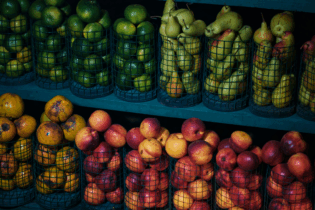Tristan Wiggill learns how established tyre brands prove their worth in tough operating environments.
Most tyre suppliers in the market today have a range of suitable tyres for cross-border, long-haul transporters. Despite this, tyre research and development is ongoing. Several tyre suppliers are involved in a number of studies designed to document and detail tyre wear rates and are trying to find ways of improving the tyre casing integrity of their products. “We are always looking to improve tyre casings and the retreadibility of tyres, and we work with selected fleets in this endeavour,” says Peter van Rooyen, executive manager: Exports at Bridgestone South Africa. While a challenge for African tyre suppliers is dealing with high ambient temperatures, they are also under great pressure from transport operators. Van Rooyen explains: “The problem for transport operators is that they want/need a suitable tyre, right now, and cannot wait two or three years for tyre suppliers to complete research and development into tyres that would be better suited to the conditions they operate in.” The good news for these operators, however, is that much of the damage caused to truck and trailer tyres can be limited, immediately, simply by paying more attention to appropriate tyre pressures. He says many cross-border operators no longer fit retreaded tyres, preferring to use new tyres. “It is commonplace for operators to fit premium-brand tyres on the steering and drive axles of their trucks, and use cheaper, inferior tyres on the other (trailer) axles,” Van Rooyen explains.He adds that, in many instances, Chinese tyre brands are being used on truck trailers, although tyre choice is also largely influenced by the truck and trailer configuration employed, the origin of the vehicle and whether the vehicle is new or used.
Unlike South Africa, many African states have minimal load restrictions, which, apart from contributing to gross vehicle overloading on the continent, plays a role in tyre construction and load factor. Tyre suppliers need logistics service providers to constantly feed them information, so that common problems and trends can be identified. In Bridgestone’s case, it acquires and compares its tyres to readily available tyres sold in the regions where problems are occurring, to help it gain further insight. Buying cheap is expensive The company wholesales its tyres directly into the countries in which it has distribution agreements, in order to keep a degree of control. Competition in Africa is rife and, apart from major players and recognisable brands, the continent is beset with Chinese, Korean and Indian tyre brands, which dominate the SADC and East African tyre markets. Many of these tyres are dumped into Africa, having been rejected by strict North American and European tyre standards, which are designed to protect consumers as much as the tyre supplier industry in those regions. Cheaper tyre brands face their own challenges and, inferior quality perceptions aside, are challenged to find buyers of excess stock. These brands trade on volume, whereas premium tyre brands do not, with the known brands protecting themselves by advocating that transporters use cost-per-kilometre calculations when choosing a tyre supplier, which often reveals their longer-term superiority and cost-saving benefits.







